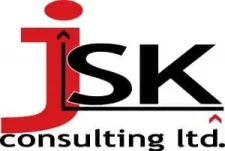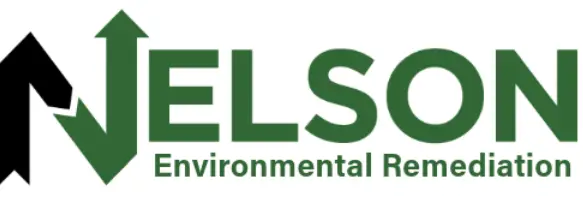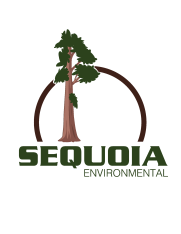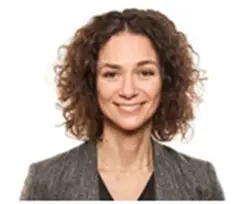2025 Agenda
(Agenda subject to change.)
Click on the presentation title to view the abstracts as a pdf.
RemTech Platinum Sponsor
Tuesday, October 14th
Registration & Exhibitor Move-in
Conference Centre, 2nd Level
Wednesday, October 15th
Registration Opens
Conference Centre, 2nd Level Foyer
Exhibitor Move-in Continues
Conference Centre, 2nd Level Foyer
Consultation to Co-Ownership – Indigenous Panel
Coleman
This panel will explore how long-term, trust-based partnerships between Indigenous communities, post-secondary institutions, and industry are driving meaningful environmental outcomes. Beginning with the foundational relationship between NAIT and Peavine Métis Settlement. Moving on to the successful spill cleanup with the Lubicon Lake Band, where Indigenous leadership directed the response. Closing with the Pigeon Lake Remediation Program — starting with the history and working through a multi-nation initiative involving four Nations.
The session will move from the principles of partnership-building through to tangible project examples, concluding with capacity-building and long-term environmental stewardship.
Moderator:
Brad Spence, Trace Associates
Panelists:
Michelle Cotton, Solstice Environmental Management
Leticia Gladue, Lubicon Lake Band
Matthew Menzies, NAIT Indigenous Partnerships & Engagement
Lynn Smith, Peavine Métis Settlement
Brandon Spiller, Sublatus Environmental
Colin Cochran, Imperial Oil
Coleman
Beatty
Shaugnessy
PTAC Panel
Coleman
Moderator:
Tannis Such, PTAC
Legal Hot Topics for the Environmental Industry Panel
Beatty
Moderator:
Stuart Chambers, McLennan Ross
Moderator:
Michelle Heffernen, Trace Associates
This panel, hosted by the PTAC Remediation Reclamation Research Committee will showcase innovative tools and research advancing soil and vegetation management for site closure. Presentations will feature emerging guidance for selenium, chloride plume delineation, weed risk management, and updates to key resources including the Subsoil Salinity Tool.
PTAC Remediation & Reclamation Research Committee Overview Introduction
Tannis Such, PTAC
Jason Desilets, Cenovus
Finalization of Research for Selenium and Sulphate Ecotoxicology
Anthony Knafla & Viktoria Winter
Equilibrium Environmental Inc.
Enhancing Chloride Plume Resolution Through Incorporation of Soils Data – Could It Shrink Your Plume?
Daniel Pollard and Ashley Morgan, Montrose Environmental
Subsoil Salinity Tool Version 3.0 Technical Manual
Greg Huber, Equilibrium Environmental Inc.
Development of a Chloride Water Quality Guideline Based on Hardness and Consideration for Cation Toxicity
Tony Knafla, Equilibrium Environmental Inc.
This panel of legal experts will discuss hot topics affecting practitioners and businesses in the environmental industry. Topics will include trends in regulatory enforcement, update on noteworthy environmental litigation and legal developments affecting businesses.
Panelists:
Sean Parker, McLennan Ross LLP
Annemarie Clarke, Witten LLP
Anand Srivastava, Willms & Shier Environmental Lawyers LLP
This panel explores how to move past the friction and into a future of collaboration, innovation, and mutual respect. Through the voices of four professionals each from a different generation and role. The Panel will unpack:
- Where generational differences show up most in the workplace
- How to lead and communicate effectively across age groups
- What it takes to create a culture
that’s both rooted and ready for change - How to ensure no one—regardless of age—is left outside the gates because they didn’t download the app
Don’t be the one stuck outside the concert gates without the app.
Panelists:
Joshua Dias, Bureau Veritas Laboratories
Vivian Bond, Bureau Veritas Laboratories
Emi Reich, Trace Associates
Kevin French, VEI
Optional Activity
Nature Walk
Details TBA
Networking Break
Exhibit Areas
PTAC Panel
Coleman
Moderator:
Tannis Such, PTAC
Regulator Updates
Beatty
Moderator:
Craig Wells, Parsons
Moderator:
Michelle Heffernen, Trace Associates
PTAC Panel Continued
Coleman
Conventional vs. Passive Management of Noxious Weeds for Final Reclamation of Industrial Sites in the Boreal Forest: A Risk Management-Based Approach – Results of the Pollen and Seed Bank Analysis Pilot Study
Indigenous Engagement and Weed Management Support Tool
Andres Rolhauser, NAIT
Dean McKenzie, Vertex
Stefan Schreiber, Innotech Alberta
AUPRF Overview
Allan Fogwill, PTAC
AER: Oversight of Contamination Management
Adrian Kerry, AER
AER: Site-Specific Liability Assessment
Sasha Bailey, AER
Upstream Oil and Gas Site-Specific Risk Assessment in Alberta – Clarification and Updates
Geordie Clyde, AER
Tyrel Hemsley, Alberta Environment and Protected Areas
Panelists:
Joshua Dias, Bureau Veritas Laboratories
Vivian Bond, Bureau Veritas Laboratories
Emi Reich, Trace Associates
Kevin French, VEI
Networking 101
Rob Ritchie – 3rd floor Conference Center
An opportunity for those new to RemTech or new to the industry to learn from industry veterans about networking and making the most of attending RemTech.
Thursday, October 16th
Registration Open
Conference Centre, 2nd Level Foyer
Networking Breakfast
Van Horne Ballroom
Opening Remarks, Welcome and Keynote
Van Horne Ballroom
Todd Latham, MC
Scott Purves, ESAA President
Networking Break
Exhibit Areas
Coffee Break Sponsor
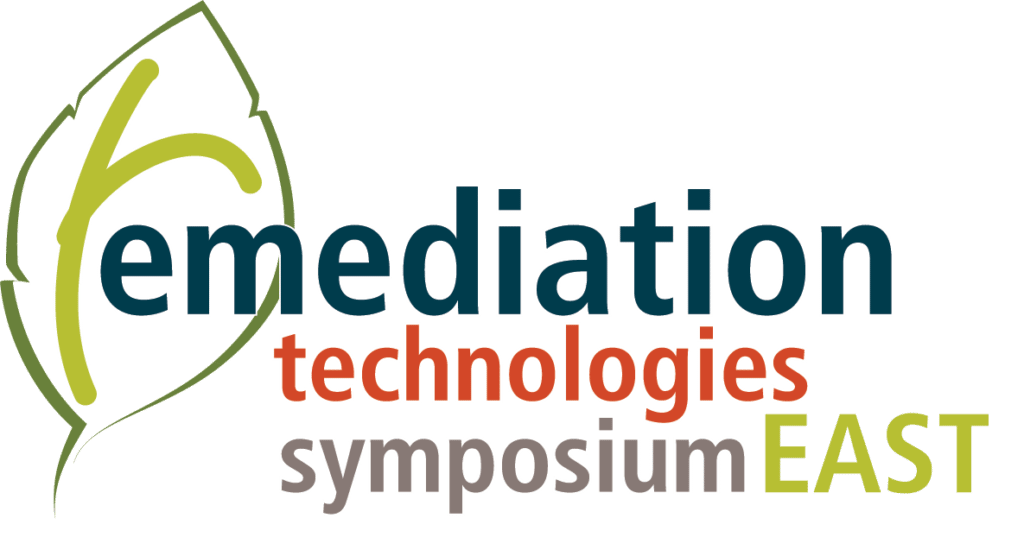
A Little Bit of Everything
Coleman
Moderator:
Louise Burden, Ashwell Consulting
Bugs and Plants
Beatty
Moderator:
Renee White, Amrize Canada
LNAPL
Shaughnessy
Moderator:
Matt Rousseau, GHD
Evolving Remediation Practice in Australia: Challenges, Regulatory Variation, and Emerging Best Practices
Louise Cartwright, Montrose Environmental Australia (Epic Environmental)
Bioremediation of Petroleum and PFAS Impacted Industrial Sites in North America
Katherine French, BluumBio
Sustainable Remediation – More Ways Than One
Michael Lakustiak, Trace Associates
Alexis Harvey, Federated Co-operatives Ltd.
Andre Podevin, Trace Associates
Building Robust LCSM for Remediation Decision-Making: Next-Generation Tools
Paul Furbacher, Ecometrix
BTEX in the Sand River Aquifer – Evidence of Natural Anoxic Decomposition of Plant Matter
Phil Richards and Kayla Mukli, Montrose Environmental
In-Situ Microbial Treatment to Remediate a Historical Crude Oil Release within a Wetland in Jasper National Park, Alberta
Murray Ostrander, Alta Tech Environmental Services Inc.
Heather Anderson, Trans Mountain
Digital Solutions for Post-Remediation and Reclamation Vegetation Management: A Case Study from Northeastern Alberta
Matt Wilkinson, Montrose Enviornmental
Trees and Microbes as Sustainable Nature-Based Treatment on Hydrocarbons and Mixed Waste Sites
Chris Cohu, Intrinsyx Environmental
Quantifying Natural NAPL Attenuation: Practical Tools to Support Remedy Transition
Parisa Jourabchi, ARIS Environmental Ltd.
Groundwater
Coleman
Moderator:
Kevin French, VEI
Risk Management
Beatty
Moderator:
Sylvain Bordenave, Trace Associates
Brownfields
Shaughnessy
Moderator:
Meggen Janes, Canadian Brownfield Network
Do soil PAH Guidelines Represent True Risk?
Lisa Kates, Montrose Environmental
Contaminated Sites (Re)Development: Legal Requirements that Industry and Consultants Need to Know
Jacquelyn Stevens, Willms & Shier Environmental Lawyers LLP
The Impact of Improved Hydrogeological Representation through the Use of Airborne Electromagnetic Data on Reducing Model Forecast Uncertainty
John Richins, University of Arkansas: Department of Geosciences
Contaminated Site Management Options: Framework and Challenges in Practice
Amy Philip, Parsons
PRBs and Innovative Boundary Control to Support Redevelopment of a Hazardous PCB Brownfield
Samuel Lingwood, Pinchin
Devin Rosnak, Green Infrastructure Partners Inc.
Hydrocarbon Groundwater Plume Stability and Persistence: Lessons Learned from 29 sites and 5 Million Data Points
Steven Siciliano, LiORA by EMS
Uses of 3D Geological Modelling, Data Visualization, and Pragmatic Risk Management Approaches to Extract Value from Large Heritage Datasets and Drive Legacy Contaminated Sites Towards Closure
Nicholas Bueckert and Heather Murdoch, AECOM Canada
Estimating Brownfield Remediation Costs: How Much Data is Enough, and How Many Expert Opinions are Needed?
Grant Walsom, Trace Associates
Traditional Foods Consumption: Risk Management and Nutritional Value
Lindsay McCallum, WSP Canada
Risk Assessment and Site Re-Development – Changing the Paradigm
Ian Mitchell & Cory Kartz, Millennium EMS Solutions Ltd.
Managing and Reducing Environmental Liabilities at the Town of Slave Lake: A Sustainable Salt Remediation Strategy
Zion Yua, Thurber Engineering Ltd.
Optional Activity
Yoga
TBA
Optional Activity
Nature Hike
TBA
Friday, October 17th
Registration Open
Conference Centre, 2nd Level Foyer
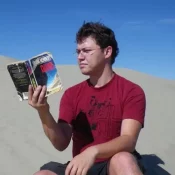
Conservation Update
Van Horne Ballroom
Conservation of an Endangered Curiously Isolated Butterfly.
James Glasier, Wilder Institute
Optional Activity
Yoga
TBA
Emerging Contaminants
Coleman
Moderator:
Danielle Hutson, Element
In-Situ Treatment & Management
Beatty
Moderator:
Scott Purves, Montrose Environmental
Data Analysis
Shaughnessy
Moderator:
Liese Mclaren, Envirosearch
Field Deployment of FRED-PFAS: a portable unit for Measuring total PFAS in the field
Margaret (Maggie) Renaud-Young, FREDsense Technologies Corp.
Implementation, Operation and Adaptation of a Large-Scale, Long-Term ISCO Remediation Project
Annalisa Gallinari & Neil Marchand, WSP Canada
PFAS in Air – Just the Facts
Darlene Hoogenes Stastny & Tammy Chartrand, ALS Environmental
Chlorinated Solvent Daughter Product Management and Expedited Remediation
Mike Mazzarese, AST Environmental
What the Shale? Impacts on Shallow Soil and Groundwater Quality from Near Surface Marine Shale Bedrock in Alberta
Alex Haluszka, Montrose Environmental
PFAS in Source Water: Preparing for New Regulations
Krista Barfoot, SLR Consulting
Remediation Case Studies Gone Wrong: From Bench- to Full-Scale & the Cost of Assumptions
Bruce Tunnicliffe, VEI Contracting
Methanol – Now You See It, Now You Don’t
Anthony Knafla, Equilibrium Environmental Inc.
Emerging Contaminants
Coleman
Moderator:
Vivian Bond, Bureau Veritas Laboratories
In-Situ Treatment & Management
Beatty
Moderator:
Brian Lambert, North Shore Environmental Consultants
AI: The Future is Friendly
Shaughnessy
Moderator:
Renee White, Amrize Canada
PFAS Beyond AFFF: “Emerged” Contamination in AB
Permveer Bains, Element Materials Technology
Emphasizing Validation & Human-Centered Generative Artificial Intelligence (GenAI): The “Report Review AI” Case Study
Todd Kremmin, Jacobs Minneapolis
PFAS Stabilization: Comprehensive Bench Scale Evaluation of Amendments, Dosage, and Binders
Korene Torney, SLR Consulting
Dissolved Organic Matter as a Booster for Hydrocarbon Bioremediation: Insights from Positron Imaging and X-Ray Spectroscopy
Tony Tian, University of Saskatchewan
Microplastics – “The New PFAS?”
Terry Obal, SGS North America
Beyond the Buzz: Real-World AI Agents in Contaminated Land Reporting
Tom Davies, Datanest








